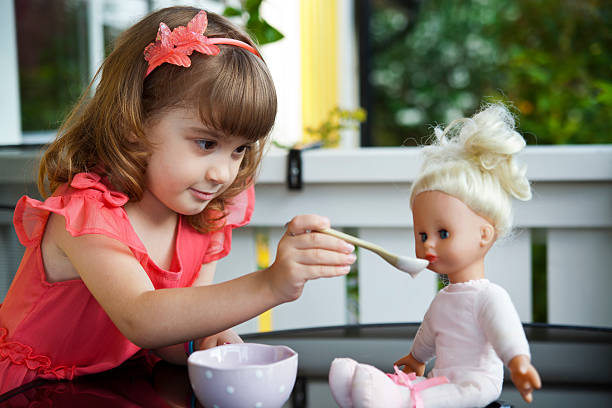DECE1-UNIT 1(HINDI)-IGNOU-ORSP
Welcome To
Odisha Regional Study Point
We Allows the best competitive exam preparation for SSC,BANKING, RAILWAY &Other State Exam(CT, BE.d) DECE(IGNOU) In ଓଡ଼ିଆ Language…
Why opt ORSP?
✅Daily Free Live class
✅Daily Free practice Quiz
✅FREE Live Tests Quiz
✅Performance Analysis
✅All Govt Exams are Covered
Join With us As per Schedule
And
Happy Learning…
Thank You
ORSP
(9502052059)
UNIT 1
THE EXPERIENCE OF CHILDHOOD
बच्चों का अनुभव
Structure:
1.1 Introduction
1.2 Being a Child
1.3 The Socio-Cultural Context of Childhood
1.3.1 Gender
1.3.2 Social Class
1.3.3 Religion
1.3.4 Family Structure and Interrelationships
1.3.5 Ecological Contexts
संरचना:
१.१ परिचय
1.2 बच्चा होना
1.3 बचपन की सामाजिक-सांस्कृतिक संदर्भ
१.३.१ लिंग
१.३.२ सामाजिक वर्ग
१.३.३ धर्म
1.3.4 पारिवारिक संरचना और अंतर्संबंध
1.3.5 पारिस्थितिक संदर्भ
DECE1-UNIT 1(HINDI)-IGNOU-ORSP
INTRODUCTION
Can you recollect some of the incidents of your childhood and your thoughts and
feelings as a child? Some happenings stand out in one’s memory, others are hazy and
some are forgotten. This Unit aims to recapture some of the experiences and feelings of
a child. There are many similarities among children. but each child’s experience of
childhood is a different one. An understanding about children helps in interacting with
them and is basic to organizing services and programmes for them.
प्रस्तावना
क्या आप अपने बचपन की कुछ घटनाओं और अपने विचारों को याद कर सकते हैं ? कुछ घटनाएं ऐसी होती हैं जो हमें बहोत देर तक याद रेेहति हैं तो कुछ धुंदली सी पड़ जाती हैं और कुुुुछ तो हम बिलकुल ही भूल जाते हैं । इस इकाई का उद्देश्य बाल्यावस्था के कुछ अनुभव और भावनाओं को याद दिलाना है । बच्चों में बहोत समानताएं होती हैं मगर सबके बचपन केे अनुभव अलग अलग होते हैं ।
बच्चों को समझने से न सिर्फ उनके ऊपर प्रभाव डालना संभव होता है बल्कि उनके लिए कार्यक्रम बनाना भी आसान होता है ।
Objectives
After studying this Unit, you should be able to:
describe some experiences and characteristics common to children studying
discuss how different socio-cultural settings influence the experience of childhood
उद्देश्य
इस इकाई का अध्ययन करने के बाद, आपको निम्नलिखित कार्य करने में सक्षम होंगे :-
अध्ययन करने वाले बच्चों के लिए कुछ अनुभव और विशेषताओं का वर्णन करना ।
चर्चा करें कि विभिन्न सामाजिक-सांस्कृतिक सेटिंग्स बचपन के अनुभव को कैसे प्रभावित करती हैं ।
BEING A CHILD
Mala, an active five year old girl, is served roti and potato curry for lunch. The curry
has rai seeds in it. During the course of the meal she sees a rai seed, takes it out of the
bowl and starts to play with it. She puts it on the sable, moves i about, and says, “Look
mummy, this is a tiny ball. I wonder if the ants play with this ball!”
1.2 कैसा होता है बचपन ?
माला एक पाँच वर्षीय फुर्तीली, चुस्त एवं जिज्ञासु बालिका है। एक दिन दोपहर को खाना
खाते समय
उसकी नजर आलू की सब्जी में सरसों के दाने पर पड़ती है। वह उसे निकालकर
खेलने लगती है। वह उसे ऊपर फेकती है और जैसे दाना मेज़ पर गिरता है वह कहती है,
“देखो माँ! यह एक छोटी सी गेंद है। शायद इससे चीटियाँ खेलती होगी।”
Three year old Manoj , t0 his amazement, sees that there is now an infant brother in the
house with whom he has to share his parents’ love and attention. He does not like the
situation very much, but he tries to accept his brother and be friendly with him One
day, when the mother was late in getting ready because of the baby, Manoj remarked
vehemently, “Mummy, let’s give the baby away, then we will not be late.
तीन वर्षीय मनोज अपने घर में नवजात भाई को देखकर हैरान हो जाता है। छोटे भाई के आने
से माता-पिता का स्नेह व ध्यान उसकी ओर भी बंट गया है। इस स्थिति से वह प्रसन्न तो
नहीं है किन्तु फिर भी उसे भाई के रूप में स्वीकार करने व उससे स्नेहशील आचरण करने
का प्रयत्न करता है। एक दिन जब शिशु के कारण तैयार होने में माँ को देर हो जाती है तो
मनोज तेजी से बोलता है, “माँ! इसे किसी और को दे दो। फिर हमें कभी देर नहीं होगी।
Tara is going to be four. She enjoys playing in the rain as most children do. One rainy
day, she was playing outside and the members of the family were sitting together in a
room. After every few minutes Tara would come laughing into the room, hug her curs
and go out again to continue her play. On being invited to sit with the rest she would
protest, “No, no! I want to play outside.” This continued for quite some time.
तारा चार वर्ष की होने वाली है। अन्य बच्चों की तरह वह भी बारिश में खेलना बहुत पसन्द
करती है। एक दिन वह बारिश में बाहर खेल रही थी। परिवार के अन्य सदस्य कमरे में बैठे
थे। थोड़ी-थोड़ी देर बाद तारा हँसते हुए कमरे में आती अपनी मौसी से लिपटती और फिर
बाहर खेलने चली जाती। जब उसे अन्य लोगों के साथ बैठने के लिए कहा जाता तो वह कहती ” नहीं मुझे बाहर खेलना है ” ।
These anecdotes reveal the feelings and playfulness characteristic of children. It is only
child who can see a ball in a rai seed or pretend that a ball of mud is a piece of cake
and a tin box is a toy house. Make-believe comes easily to them and they endow
objects with qualities they do not actually have just as Mala did. In the second anecdote
is reflected the reaction of the child to the birth of a sibling which is ambivalent and
may range from jealousy and dislike to joyful acceptance. The third anecdote reflects the child’s early steps towards being on her own. She is realizing that she can do things by herself and does not always need to have the protection of adults. However, while she is learning to be independent, she needs to reassure herself of the presence of loved and trusted persons. This she does by coming inside now and then.
उपर्युक्त घटनाएँ बच्चों की भावनाओं और उनका खेल के प्रति लगाव प्रदर्शित करती है।
केवल बच्चे ही सरसों के बीज को गेंद, मिट्टी के ढेले को मिठाई का टुकड़ा और टीन के डिब्बे
को मकान के रूप में देख सकते हैं। कल्पना की उड़ान उनके लिए बहुत आसान होती है. और
वे वस्तुओं को कुछ ऐसी विशेषताएँ प्रदान कर देते हैं जो उनमें वास्तविक रूप में नहीं
होती. जैसे कि माला ने सरसों के दाने के साथ किया। दूसरी घटना में एक बालक की
अपने छोटे भाई के जन्म पर प्रतिक्रिया झलकती है, जो ईर्ष्या और नापसंदगी से लेकर खुशी
तक हो सकती है। तीसरी घटना बालिका के स्वावलम्बी होने के प्रयास को दर्शाती है। तारा यह
अनुभव करने लगी है कि वह कुछ कार्य स्वयं कर सकती है और उसे सदैव बड़ों के संरक्षण की
आवश्यकता नहीं है। हालाँकि तारा स्वतंत्र रूप से कार्य करना सीख रही है फिर भी उसके
लिए अपने प्रिय और विश्वस्त लोगों की उपस्थिति अनिवार्य है। तारा का कमरे में बार-बार
आना उसकी इस भावना को दर्शाता है।
assumed that a child does not know what is happening around her and cannot make
sense of events. This is not true. It is also felt that children begin to think and
understand when they begin to speak. But we do know that infants understand many
words before that period. Some people expect children to run errands, look after
themselves and start attending school without emotional or other support from adults.
On the other hand, some think that children are immature, irrational, inaccurate in
their understanding of events and therefore, cannot do any task given to them.
Adults sometimes wrongly believe that nothing of consequence happens during
childhood.
जाता है कि बच्चों को अपने आसपास होने वाली घटनाओं की जानकारी नहीं होती है और
वह उन्हें समझ भी नहीं पाते। यह भी समझा जाता है कि बच्चे जब बोलना शुरू करते हैं
तभी वह सोचना व समझना शुरू करते हैं। यह धारणाएँ गलत हैं। हम जानते हैं कि शिशु
बोलने से पहले बहुत शब्द समझ सकते हैं।
यह अपेक्षा रखते हैं कि वे छोटे-मोटे काम और अपनी देखभाल स्वयं करें और वयस्कों के
भावनात्मक सहारे के बिना ही स्कूल जाना शुरू कर दें। दूसरी ओर कुछ लोग हैं जो सोचते हैं कि बच्चे भोले-भाले और अनजान होते हैं, आसपास घटित होने वाली घटनाओं को समझ पाने में
असमर्थ होते हैं अतः कोई भी सौंपा गया कार्य ठीक तरह से नहीं कर सकते। वयस्कों की यह
धारणा भी गलत है कि बचपन में कुछ भी महत्वपूर्ण नहीं घटता है।
different way and their ways of expressing feelings are also different. A newborm can
sense feelings of love and affection by the way the parents hold her and look after her
needs. An eight month old child is able to comprehend a scolding or an endearment
even though she is not able to talk. She also understands and responds to sentences like,
“Give it to me” and “No, don’t do that.” If a game of peek-a-boo is played with a
10 month old child, she participates in the game by looking for the person and
anticipating her appearance. This reflects that the child is thinking. Achievements such
as these may seem very simple, but you have only to observe a child who has just
learnt to walk to see how gleefully she walks around the house for the pleasure of it
and bow she picks herself up again after falling down. Notice how she takes a few bold

steps and then looks back at the mother for reassurance. You would have observed
many instances, where the child is learning and developing. Do they not bring forth a
picture of children as intelligent beings and of childhood a valuable time for
learning?
वयस्कों की तरह ही बच्चों के भी विचार और भावनाएँ होती हैं। अंतर केवल इतना है कि
बच्चों के सोचने का ढंग और भावनाओं को व्यक्त करने का ढंग भिन्न होता है। जिस प्रकार
माता-पिता नवजात शिशु को गोदी में उठाते हैं और उसकी देखभाल करते हैं, उससे शिशु को
अपने प्रति माता-पिता के स्नेह व प्यार भावनाओं का अहसास हो जाता है। एक आठ
महीने की बालिका बोल नहीं सकती फिर भी उसे यह समझ आ जाता है कि उसे डाँटा जा
रहा है या प्यार से कुछ कहा जा रहा है। वह कई वाक्य, जैसे कि “यह मुझे दो”, “नहीं,
ऐसा मत करो,” समझती है और उन पर प्रतिक्रिया करती है। अगर दस मास की बालिका के
साथ लुक्का-छिप्पी का खेल खेला जाए तो वह भी उसमें हिस्सा लेती है और छिपे हुए व्यक्ति
को ढूंढने की कोशिश करती है -यानि कि वह समझती है कि व्यक्ति यहीं आसपास है। इन सब
से यह ज्ञात होता है कि बालिका में विचारशक्ति है। हमें शिशु की उपर्युक्त उपलब्धियाँ
शायद बहुत ही साधारण सी प्रतीत हो। परंतु अगर आप किसी बालिका को देखें जिसने अभी
चलना सीखा ही है तो आप देखेंगे कि वह कितने मज़े से पूरे घर में चलती है और गिरने पर
स्वयं उठकर पुन: चलने लगती है। आपने देखा होगा कि वह पूरे विश्वास के साथ कुछ कदम
उठाती है और फिर आश्वासन के लिए पीछे मुड़कर माँ को देखती है। इन घटनाओं में बच्चों
की सीखने व विकास की प्रक्रिया देखने को मिलती है। क्या इन घटनाओं से बच्चों के
बुद्धिमान होने की झलक नहीं मिलती और क्या बाल्यावस्था का समय सीखने का मूल्यवान
समय नहीं है?
Childhood is also a period when the child learns to form relationships with
people-first with parents, then with the wider family circle and later with other
adults and children. This requires considerable courage and confidence. Imagine what
you would feel if you shifted to a new town and had to make friends with new
people.
सबसे पहले वे माता-पिता, फिर परिवार के अन्य सदस्यों और बाद में अन्य वयस्कों और
बच्चों के साथ संबंध स्थापित करते हैं। इसके लिए आत्मविश्वास और साहस की आवश्यकता
होती है। याद कीजिए कि जब आपको नए शहर में आकर नए लोगों से दोस्ती करनी पड़ी थी
तब आपने कैसा महसूस किया था ?
questioning are the ways through which children learn. It is often difficult to make a
child sit still for even five minutes. They like to examine things and objects around
them. A new object is thumped, squeezed, banged, licked and often dismantled in an
attempt to examine it Notice the rapt look on the child’s face as she does so! Any new
event of experience brings forth a stream of “why?”, “how?” and “when?” so that the
child’s questions often tax the adult’s patience.
जिज्ञासु रहते हैं। खोजबीन करना व प्रश्न करना ही उनके सीखने का तरीका है। प्राय: बच्चों
को पाँच मिनट के लिए भी स्थिर बिठाना कठिन होता है। इस खोजबीन के प्रयास में वे
वस्तुओं और खिलौनों को ठोकते हैं, बजाते हैं, तोड़ मरोड़ करते हैं, चाटते और प्रायः इसी प्रयास में वस्तु के पुर्जे अलग-अलग कर देते हैं। इस काम को करते हुए उनके चेहरे पर झलकती हुई तल्लीनता व आनन्द को देखिए! कोई भी नई घटना या अनुभव होने पर “क्यों”, “कैसे”, “कब” जैसे प्रश्नों की बौछार लग जाती है और ऐसे में बच्चों के प्रश्नों से वयस्क के धैर्य का बाँध टूट जाता है।
ways and to grow up as quickly as possible. They imitate the adults and pretend to be
like them by wearing their clothes and trying to talk and act like them. Some of the
games of children such as “Doctor-Doctor” and “Police-Thief” reflect their imitation of
the activities of adults.
की नकल करते हैं, उनकी तरह कपड़े पहनते हैं. और बातचीत और व्यवहार करते हैं।
“डॉक्टर-डॉक्टर” और “पुलिस-चोर” जैसे कुछ खेलों में बच्चों द्वारा वयस्कों के कार्यकलापों की नकल की झलक दिखाई पड़ती है।

that many things are forbidden — they must not touch something, they must not bit other
children, they must stop playing after a specific time and so on. Many of the
instructions they are required to follow seem unreasonable to them. There often follows
a battle of wills between the parents and children. Learning to obey a rule is sometimes
painful because it prevents children from doing what they want to do. During the period
of childhood they also learn the ways of eating, dressing, talking and behaving
considered appropriate in their society and culture.
है। बच्चे यह भी सीखते हैं कि बहुत से काम नहीं करने चाहिए, जैसे -कुछ वस्तुओं को हाथ
नहीं लगाना चाहिए, हर समय केवल खेलना ही नहीं चाहिए और दूसरों को मारना नहीं
चाहिए। कई आदेश जिनका पालन बच्चों को करने के लिए कहा जाता है, वे उन्हें बेतुके व
अर्थहीन लगते हैं। इस कारण कई बार माता-पिता और बच्चों बीच मतभेद हो जाता है।
कई बार बच्चों को नियमों का पालन करना अच्छा नहीं लगता है क्योंकि ये उन्हें अपने मन
की करने से रोकते हैं। बचपन में बच्चे समाज और संस्कृति के अनुसार खाना, पीना, पहनना,
बोलना और आचरण करना भी सीखते हैं।
Many experiences of childhood are universal and an inevitable part of growing up.
However, childhood has a different meaning for every chid. In the next Section you
will read what makes childhood a different experience for each child.
बहुत समानताएँ होती हैं। बचपन के कई अनुभव सार्वभौम होते हैं और बच्चों के विकास का
अनिवार्य हिस्सा हैं। फिर भी प्रत्येक बच्चे के लिए बचपन का अलग तात्पर्य होता है। इस
इकाई के अगले भाग में आप पढ़ेंगे कि किन कारणों से बच्चों के अनुभव अलग-अलग होते हैं ।
following in the space provided beiow.
a) Children’s curiosity
b) Children’s imitation of adults
The more curious a child is, the more he learns. Nurturing your child’s curiosity is one of the most important ways you can help her become a lifelong learner.

Babies are born learners, with a natural curiosity to figure out how the world works. Curiosity is the desire to learn. It is an eagerness to explore, discover and figure things out.
Parents and caregivers don’t have to “make” their children curious or “push” their children to learn. In fact, research shows that it is a child’s internal desire to learn (their curiosity), not external pressure, that motivates him to seek out new experiences and leads to greater success in school over the long term.
Curiosity is something all babies are born with. They come into the world with a drive to understand how the world works:
- A newborn follows sounds, faces and interesting objects with her eyes.
- An 8-month-old shakes a rattle and then puts it into his mouth to see what this object can do.
- A toddler takes a stool to reach the countertop where the phone is—a “toy” she loves to play with.
- A 2-year-old pretends she is the garbage collector and puts all her stuffed animals into the laundry basket “garbage truck” to figure out what it feels like to be in the other person’s shoes.
शिशुओं को सीखने वाले पैदा होते हैं, यह जानने की स्वाभाविक जिज्ञासा के साथ कि दुनिया कैसे काम करती है। जिज्ञासा सीखने की इच्छा है। यह चीजों का पता लगाने, खोजने और उनका पता लगाने की उत्सुकता है।
माता-पिता और देखभाल करने वालों को अपने बच्चों को सीखने के लिए उत्सुक या “धक्का” देना होगा। वास्तव में, अनुसंधान से पता चलता है कि यह एक बच्चे की आंतरिक इच्छा है (सीखने की उनकी जिज्ञासा), बाहरी दबाव नहीं, जो उसे नए अनुभवों की तलाश करने के लिए प्रेरित करता है और लंबे समय में स्कूल में अधिक से अधिक सफलता की ओर ले जाता है।
जिज्ञासा एक ऐसी चीज है जिसका सभी बच्चे जन्म लेते हैं। वे दुनिया में यह समझने के लिए एक ड्राइव के साथ आते हैं कि दुनिया कैसे काम करती है:
एक नवजात शिशु अपनी आँखों से आवाज़, चेहरे और दिलचस्प वस्तुओं का अनुसरण करता है।
8 महीने का बच्चा एक खड़खड़ाहट को हिलाता है और फिर उसे अपने मुंह में डालता है कि यह वस्तु क्या कर सकती है।
एक बच्चा काउंटरटॉप तक पहुंचने के लिए एक स्टूल लेता है जहां फोन है – एक “खिलौना” जिसके साथ वह खेलना पसंद करता है।
एक 2 वर्षीय बहाना है कि वह कचरा संग्रहकर्ता है और अपने सभी भरवां जानवरों को कपड़े धोने की टोकरी “कचरा ट्रक” में डाल देती है ताकि यह पता चल सके कि यह दूसरे व्यक्ति के जूते में क्या लगता है।
One of our biggest responsibilities is to be a good example to our children. This is because children, especially during the first 5 years of life, imitate everything they see in adults.
हमारी सबसे बड़ी जिम्मेदारियों में से एक हमारे बच्चों के लिए एक अच्छा उदाहरण है। ऐसा इसलिए है क्योंकि बच्चे, विशेष रूप से जीवन के पहले 5 वर्षों के दौरान, वे जो कुछ भी वयस्कों में देखते हैं, उनका अनुकरण करते हैं।

Children don’t only imitate their parents. As we well know, they don’t simply experience isolated scenarios. Nowadays, they have more social stimulation than ever, and even “models” outside their own home or school. We also can’t forget television and those new technologies they use from a very early age.
Everything they see, hear, and happens around them influences them. We adults make up that vast theater of characters that they imitate and that will influence their conduct and even their way of understanding the world. More on this later.
बेहतर या बदतर के लिए, बच्चे वयस्कों की नकल करते हैं। लगभग हमारे बिना इसे साकार करने के लिए, उनकी छोटी-छोटी आँखें अध्ययन करती हैं और हम पर भरोसा करती हैं, व्यवहार में काम करती हैं, इशारों की नकल करती हैं, और शब्दों, भावों और यहां तक कि भूमिकाओं को भी आंतरिक करती हैं। हम जानते हैं कि बच्चे कभी भी अपने माता-पिता की हूबहू नकल नहीं करेंगे
बच्चे केवल अपने माता-पिता की नकल नहीं करते हैं। जैसा कि हम अच्छी तरह से जानते हैं, वे केवल अलग-थलग परिदृश्यों का अनुभव नहीं करते हैं। आजकल, उनके पास पहले से कहीं अधिक सामाजिक उत्तेजना है, और यहां तक कि अपने घर या स्कूल के बाहर भी “मॉडल” हैं। हम टेलीविजन और उन नई तकनीकों को भी नहीं भूल सकते जो वे बहुत कम उम्र से इस्तेमाल करते हैं।
वे जो कुछ भी देखते हैं, सुनते हैं, और उनके इर्द-गिर्द होते हैं, वह उन्हें प्रभावित करता है। हम वयस्कों के चरित्रों के उस विशाल रंगमंच को बनाते हैं जिसका वे अनुकरण करते हैं और जो उनके आचरण और यहां तक कि दुनिया को समझने के उनके तरीके को प्रभावित करेगा। इस पर और बाद में।

year old in India learns to speak her own language while a child in Spain learns
Spanish. One boy at the age of five begins going to a school; another of the same age
in a tribal settlement helps his father in farming and milking the buffalo; yet another is
adept at moving through the traffic on the roads to sell newspaper. The number of
people in the family, the customs, traditions, values and beliefs of the family and
community, economic status, residence in a village, a city, or a tribal settlement, whether
in the hills, plains, deserts or sea coast-these are some of the factors that influence
childhood experiences. Thus the society one lives in determines one’s experience of
childhood. This is what is meant by the socio-cultural context of childhood.
Though we can speak broadly of the Indian culture and the values therein, the customs,
beliefs and the way of life of people differ from one group to another. One cannot
speak of a homogeneous or uniform Indian culture but rather of sub-cultural groups,
each distinct from the other. This is because the groups differ with regard to economic
level, education, occupation, region, language and religion. The child’s experiences and
what she learns during this period would be different in each of these groups. You will
now read about the many factors that bring about variations in children’s experiences.
भारत में साल की उम्र में अपनी भाषा बोलना सीखता है जबकि स्पेन में एक बच्चा सीखता है
स्पैनिश। पांच साल की उम्र में एक लड़का एक स्कूल जाना शुरू करता है; उसी उम्र का एक और
एक आदिवासी बस्ती में उनके पिता खेती और भैंस पालने में मदद करते हैं; अभी तक एक और है
अखबार बेचने के लिए सड़कों पर यातायात के माध्यम से आगे बढ़ने पर निपुण। की संख्या
परिवार में लोग, परिवार की रीति-रिवाज, परंपराएँ, मूल्य और मान्यताएँ और
समुदाय, आर्थिक स्थिति, एक गाँव, एक शहर, या एक आदिवासी बस्ती में निवास, चाहे
पहाड़ियों, मैदानों, रेगिस्तानों या समुद्री तट में-ये कुछ ऐसे कारक हैं जो प्रभावित करते हैं
बचपन के अनुभव। इस प्रकार समाज एक व्यक्ति के अनुभव को निर्धारित करता है
बचपन। बचपन के सामाजिक-सांस्कृतिक संदर्भ से यही अभिप्राय है।
यद्यपि हम भारतीय संस्कृति और उसके मूल्यों के बारे में विस्तृत रूप से बात कर सकते हैं,
मान्यताओं और लोगों के जीवन का तरीका एक समूह से दूसरे समूह में भिन्न होता है। एक नहीं कर सकेगा
एक सजातीय या समान भारतीय संस्कृति की बात करते हैं, लेकिन उप-सांस्कृतिक समूहों के बजाय,
प्रत्येक दूसरे से अलग है। ऐसा इसलिए है क्योंकि समूह आर्थिक संबंध में भिन्न हैं
स्तर, शिक्षा, व्यवसाय, क्षेत्र, भाषा और धर्म। बच्चे के अनुभव और
इस अवधि के दौरान वह क्या सीखती है, यह इन समूहों में से प्रत्येक में भिन्न होगा। आप
अब कई कारकों के बारे में पढ़ें जो बच्चों के अनुभवों में बदलाव लाते हैं।
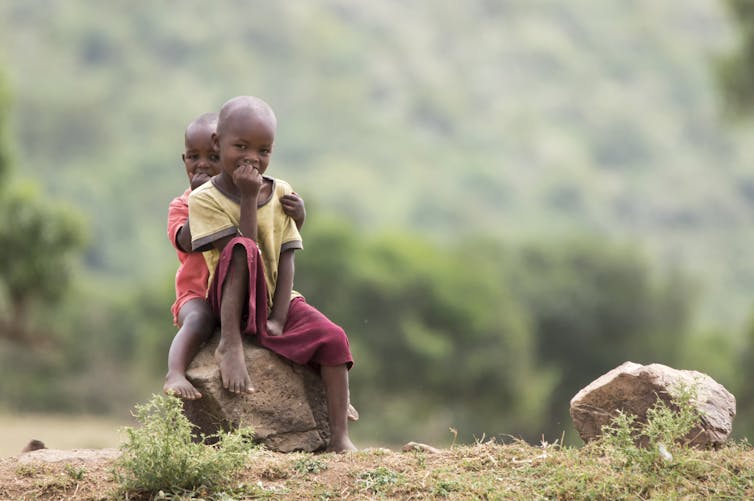

A major factor which determines a child’s experience is whether the child is a boy or a
girl. How one is brought up, the opportunities available to one and the way people
interact with one are determined to a great extent by one’s gender. An obvious
difference is in the clothes worm. Less visible but more far reaching in its impact is the
differing attitude towards boys and girls. There is no doubt that in most parts of our
country boys are given more importance than girls. The birth of a boy is an occasion for
rejoicing while, in many cases, the birth of a girl reduces the parents to tears. In many
families girls may receive very little parental love, attention or care. They may get a
lesser share of food, clothing and other resources compared to boys. In some families,
when a girl falls ill it is treated casually but the boy’s illness. gets prompt attention.
Education is considered more important for boys than for girls. Parents often sell their
assets to educate their sons and marry their daughters.
लड़की। एक को कैसे लाया जाता है, एक और लोगों के लिए उपलब्ध अवसर
किसी के साथ बातचीत एक व्यक्ति के लिंग से काफी हद तक निर्धारित होती है। एक स्पष्ट
अंतर कपड़े कीड़ा में है। कम दिखाई दे रहा है, लेकिन इसके प्रभाव में अधिक दूरगामी है
लड़कों और लड़कियों के प्रति अलग रवैया। इसमें कोई शक नहीं है कि हमारे अधिकांश हिस्सों में
देश लड़कों को लड़कियों की तुलना में अधिक महत्व दिया जाता है। लड़के का जन्म एक अवसर है
आनन्दित होते हुए, कई मामलों में, लड़की का जन्म माता-पिता के आंसुओं को कम करता है। कई में
परिवारों की लड़कियों को बहुत कम माता-पिता का प्यार, ध्यान या देखभाल मिल सकती है। उन्हें ए
लड़कों की तुलना में भोजन, कपड़े और अन्य संसाधनों का कम हिस्सा। कुछ परिवारों में,
जब कोई लड़की बीमार पड़ती है तो उसका आकस्मिक इलाज किया जाता है लेकिन लड़के की बीमारी। शीघ्र ध्यान जाता है।
लड़कियों की तुलना में शिक्षा लड़कों के लिए अधिक महत्वपूर्ण मानी जाती है। माता-पिता अक्सर उनकी बिक्री करते हैं
संपत्ति अपने बेटों को शिक्षित करने और उनकी बेटियों से शादी करने के लिए।
of conduct for girls is more strict. Boys are encouraged to be assertive, independent and
..ambitious. Girls are expected to be efficient in household tasks, obedient and respectful.
‘Decision making ability is not encouraged in girls and they are scolded if they argue too
The above discussion, however, only brings out a general trend. All girls are not
neglected and unloved. How girls are treated is determined to a great extent by the
She would als0 like to be in school
girls would treat them equally. Economic well being of the family is another factor that
influences the attitude of parents towards girls and boys. The next Section discusses how
social class brings about differences in the experiences of children.
लड़कियों के लिए आचरण ज्यादा सख्त है। लड़कों को मुखर, स्वतंत्र और प्रोत्साहित किया जाता है
.. गंभीर। लड़कियों को घरेलू कार्यों में कुशल, आज्ञाकारी और सम्मान की उम्मीद की जाती है।
‘लड़कियों में निर्णय लेने की क्षमता को प्रोत्साहित नहीं किया जाता है और अगर वे बहस भी करती हैं तो उन्हें डांटा जाता है
ज्यादा, खुलकर हंसें या जोर से बात करें, लड़की के साथ ऐसा व्यवहार किया जाता है जैसे वह एक अस्थायी व्यक्ति हो
अपने घर और समाजीकरण में उसे शादी के लिए तैयार करना है।
उपरोक्त चर्चा, हालांकि, केवल एक सामान्य प्रवृत्ति को सामने लाती है। सभी लड़कियां नहीं हैं
उपेक्षित और उपेक्षित। लड़कियों के साथ कैसा व्यवहार किया जाता है, यह बहुत हद तक निर्धारित होता है
वह स्कूल में रहना पसंद करेगी
परिवार के सदस्यों का रवैया। एक परिवार जो लड़कों और के बीच भेदभाव नहीं करता है
लड़कियां उनके साथ समान व्यवहार करेंगी। परिवार का आर्थिक कल्याण एक अन्य कारक है
लड़कियों और लड़कों के प्रति माता-पिता के रवैये को प्रभावित करता है। अगला भाग चर्चा करता है कि कैसे
सामाजिक वर्ग बच्चों के अनुभवों में अंतर लाता है।
1.3.2 Social Class(सामाजिक वर्ग)
The social class to which a person belongs is determined by her education, occupation
and family’s income. People belonging to the upper social class have high incomes and
live in big houses. Lower social class is associated with a marginal income, often close
to poverty, low levels of education and smaller dwellings. Between the rich and the poor
there are several levels of socio-economic status. The social class to which a child
belongs will determine the opportunities and facilities available to her. Whether she gets
enough to eat and wear, whether she receives formal education and whether she is
equipped for a vocation will depend upon the family’s socio-economic status. This also
determines the living space and availability of facilities such as water and electricity.


1.3.2 Social Class(सामाजिक वर्ग)
जिस सामाजिक वर्ग का व्यक्ति अपनी शिक्षा, व्यवसाय से निर्धारित होता है
और परिवार की आय। उच्च सामाजिक वर्ग से संबंधित लोगों के पास उच्च आय है और
बड़े घरों में रहते हैं। निम्न सामाजिक वर्ग एक सीमांत आय के साथ जुड़ा हुआ है, अक्सर करीब है
गरीबी, शिक्षा के निम्न स्तर और छोटे आवासों के लिए। अमीर और गरीब के बीच
सामाजिक-आर्थिक स्थिति के कई स्तर हैं। सामाजिक वर्ग जिसमें एक बच्चा है
संबंधित उसके लिए उपलब्ध अवसरों और सुविधाओं का निर्धारण करेगा। वह मिलता है या नहीं
खाने और पहनने के लिए पर्याप्त है, चाहे वह औपचारिक शिक्षा प्राप्त करे और चाहे वह
एक व्यवसाय के लिए सुसज्जित परिवार की सामाजिक-आर्थिक स्थिति पर निर्भर करेगा। ये भी
पानी और बिजली जैसी सुविधाओं के रहने की जगह और उपलब्धता को निर्धारित करता है।
Families of the Lower Social Class: A family belonging to the lower social class does
not have enough money to buy all the necessities of life. Children may not get adequate
food and clothes. Since resources are scarce, girls get a lesser share. Houses are usually
one or two room shelters shared by the entire family. Children live in crowded quarters.
In slums and crowded dwellings the surroundings may be dirty and unhygienic which
may lead to infections and diseases. Many of the needs and desires of the children in a
poor family remain unfulfilled. Extreme poverty compounds these problems. In such
cases, children may not get one square meal a day and lacking shelter they sleep on the
roadside, railway stations etc.
निम्न सामाजिक वर्ग के परिवार:
निम्न सामाजिक वर्ग से संबंधित परिवार करता है
जीवन की सभी आवश्यकताओं को खरीदने के लिए पर्याप्त पैसा नहीं है। बच्चों को पर्याप्त नहीं मिल सकता है
भोजन और कपड़े। चूंकि संसाधन दुर्लभ हैं, इसलिए लड़कियों को कम हिस्सेदारी मिलती है। मकान आमतौर पर होते हैं
पूरे परिवार द्वारा साझा किए गए एक या दो रूम शेल्टर। बच्चे भीड़ भरे क्वार्टरों में रहते हैं।
झुग्गी-झोपड़ियों और भीड़-भाड़ वाले स्थानों में परिवेश गंदा और अनहोनी हो सकता है
संक्रमण और बीमारियों को जन्म दे सकता है। एक में बच्चों की जरूरतों और इच्छाओं के कई
गरीब परिवार अधूरा रह जाता है। अत्यधिक गरीबी इन समस्याओं को कम करती है। ऐसे में
मामलों, बच्चों को एक दिन में एक वर्ग भोजन नहीं मिल सकता है और उनके पास सोने के लिए आश्रय की कमी होती है
सड़क के किनारे, रेलवे स्टेशन आदि ।
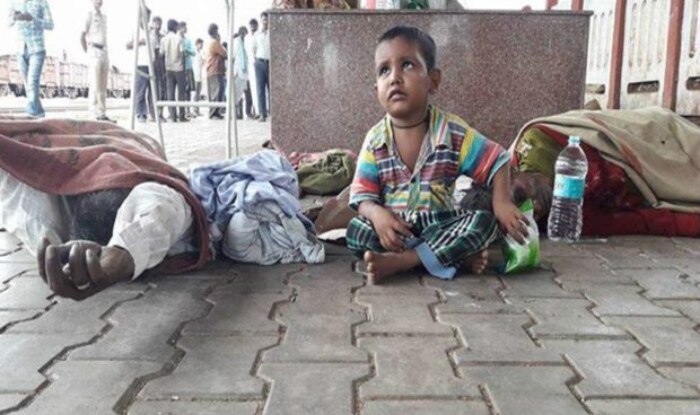
In a poor family children have to shoulder responsibilities at an early age. You must
have seen girls barely four or five years old assisting the mother in household tasks
such as fetching water, collecting firewood, preparing meals and running errands. Boys
help the father in his occupation–they guard cattle, help in the fields, accompany him
in the boet and assist him in crafts such as carpentry or pottery. Besides assisting the
parents in household work, many children move out of the protective shelter of the
house to earn and supplement the family income. They work as domestic servants,
cleaners, venders ragpickers. A major responsibility of the young girls is to manage
the home and look after younger children when both the parents go out to work.
Alternatively, the mother takes the children along with her to her place of work which
may be a house, a field or a construction site. The infant lies in a makeshift cradle
throughout the day with occasional interaction with the mother. When a little older she
may roam around the worksite playing with whatever she can find. Since both parents
are working, the time they spend with their children gets reduced.
Education obviously falls low in priority in such a set up, particularly in the case of
girls, Parents on the survival level do not consider schooling a necessity. Children are
either needed to assist the parents in their work or to earn money. Despite this, many
children of lower social class may attend school if it is possible to do so. In this way
they combine work and education.
Working in the fields-learning as well as playing
Responsibility and deprivation, which the children from lower social class have to face,
may accelerate emotional maturity. In many ways the child becomes worldly wise. At a
young age she learns to fend for herself. She learns to demand the right price for the
fruit that she is selling. She may board a train from a remote village and come to the
Childhood for most children belonging to the lower social class is full of cares and
responsibilities. However, this does not mean that they have no pleasant experiences.
Amidst their work children do play. Their play materials are stones, twigs and empty
boxes, They play in the streets, in the fields, near the coast with the sand and with
water. Frequently there is warmth, love and nurturance from the parents. Children are
valued for their contribution to the family income. However, life is harder for such a
child than for one who belongs to an economically well-off family.
एक गरीब परिवार में बच्चों को कम उम्र में जिम्मेदारियाँ निभानी पड़ती हैं। आपको चाहिए
घर के कामों में लड़कियों को मुश्किल से चार-पाँच साल की माँ की मदद करते देखा है
जैसे पानी लाना, जलाऊ लकड़ी इकट्ठा करना, भोजन तैयार करना और काम चलाना। लड़के
अपने व्यवसाय में पिता की मदद करें – वे मवेशियों की रक्षा करते हैं, खेतों में मदद करते हैं, उनका साथ देते हैं
फोड़ा में और बढ़ईगीरी या मिट्टी के बर्तनों जैसे शिल्प में उसकी सहायता करें। सहायता करने के अलावा
घर के काम में माता-पिता, कई बच्चे के सुरक्षात्मक आश्रय से बाहर निकलते हैं
परिवार की आय अर्जित करने और पूरक करने के लिए घर। वे घरेलू नौकर के रूप में काम करते हैं,
क्लीनर, लिंग ragpickers। युवा लड़कियों की एक बड़ी जिम्मेदारी प्रबंधन की है
घर और छोटे बच्चों की देखभाल जब दोनों माता-पिता काम करने के लिए बाहर जाते हैं।
वैकल्पिक रूप से, मां अपने साथ बच्चों को अपने कार्यस्थल पर ले जाती है जो
एक घर, एक क्षेत्र या एक निर्माण स्थल हो सकता है। शिशु मेकशिफ्ट पालने में रहता है
मां के साथ कभी-कभी बातचीत के साथ दिन भर। जब वह थोड़ी बड़ी हो गई
जो कुछ भी वह पा सकता है, उसके साथ खेलने वाले वर्कशीट में घूम सकता है। चूंकि दोनों माता-पिता
काम कर रहे हैं, वे अपने बच्चों के साथ बिताते समय कम हो जाता है।
शिक्षा स्पष्ट रूप से इस तरह के एक सेट में प्राथमिकता में कम है, खासकर के मामले में
लड़कियों, उत्तरजीविता स्तर पर माता-पिता स्कूली शिक्षा को एक आवश्यकता नहीं मानते हैं। बच्चे हैं
या तो अपने काम में माता-पिता की सहायता करने या पैसा कमाने की आवश्यकता है। इसके बावजूद, कई
यदि ऐसा करना संभव हो तो निम्न सामाजिक वर्ग के बच्चे स्कूल जा सकते हैं। इस प्रकार से
वे काम और शिक्षा को जोड़ते हैं।
खेतों में काम करना-सीखना और खेलना भी
जिम्मेदारी और अभाव, जिसका सामना निम्न सामाजिक वर्ग के बच्चों को करना पड़ता है,
भावनात्मक परिपक्वता में तेजी ला सकता है। कई मायनों में बच्चा सांसारिक बुद्धिमान बन जाता है। ए पर
छोटी उम्र में वह खुद के लिए लड़ना सीखती है। वह सही कीमत मांगना सीखती है
फल जो वह बेच रहा है। वह एक दूरदराज के गांव से एक ट्रेन में सवार हो सकती है और आ सकती है
निम्न सामाजिक वर्ग से संबंधित अधिकांश बच्चों के लिए बचपन देखभाल से भरा हुआ है और
जिम्मेदारियां। हालांकि, इसका मतलब यह नहीं है कि उनके पास कोई सुखद अनुभव नहीं है।
उनके काम के बीच बच्चे खेलते हैं। उनके खेलने की सामग्री पत्थर, टहनियाँ और खाली हैं
बक्से, वे सड़कों पर, खेतों में, रेत के साथ और तट के पास खेलते हैं
पानी। अक्सर माता-पिता से गर्मजोशी, प्यार और पोषण होता है। बच्चे हैं
परिवार की आय में उनके योगदान के लिए मूल्यवान। हालाँकि, ऐसे लोगों के लिए जीवन कठिन है
एक आर्थिक रूप से संपन्न परिवार से ताल्लुक रखने वाले बच्चे के लिए।
Familles of the Middle and High Social Class: Families belonging to the middle and
high social class are well-off and children do not lack the basic necessities of life. Both
boys and girls get adequate amounts of food and clothing and do not generally suffer
lack of health care. Most of the families can purchase play material for children from
the market such as dolls, guns, puzzle sets, drawing books, colours and books. Children
do not need to take part in economic activities early in life. Whether they assist in
day-to-day chores depends on the family. If there is a hired help, as in the case of
well-off families, children may not assist in household tasks. In a rich family the child
has more luxuries. She does not need to take a bus to go to school since she will be
taken by car. The child usually has more clothes, expensive play material and may get a
variety of foods to eat.
Education is considered to be of primary importance and in a sense the child’s sole task
is to do well in school. In general, education is valued equally for boys and girls.
However, there is some evidence that boys get preference in this regard. In the cities
and towns there is immense pressure on the children to do well in academic work. Often
rigorous tutoring of the child begins from the tender age of three in order to get her
admission in a school. For most children the day is spent in going to school, doing
homework and playing.
Ideally education is expected to foster independence, clarity of thought and assertiveness.
With the changing values in our society these traits are being encouraged. But an
ambivalence in the attitude towards girls is still apparent. While encouraging girls to
pursue education, parents still expect them to be subservient. They scold the girl for
being outspoken and aggressive, pointing out that these traits will not help her to adjust
to her future roles.Economic well-being makes childhood a period where the child can make use of
opportunities available to her without worrying about everyday problems.
मध्य और उच्च सामाजिक वर्ग के परिवार:
मध्य से संबंधित परिवार और
उच्च सामाजिक वर्ग अच्छा है और बच्चों को जीवन की बुनियादी आवश्यकताओं की कमी नहीं है। दोनों
लड़कों और लड़कियों को पर्याप्त मात्रा में भोजन और कपड़े मिलते हैं और आमतौर पर पीड़ित नहीं होते हैं
स्वास्थ्य देखभाल की कमी। अधिकांश परिवार बच्चों के लिए खेल सामग्री खरीद सकते हैं
बाजार जैसे गुड़िया, बंदूकें, पहेली सेट, ड्राइंग किताबें, रंग और किताबें। बच्चे
जीवन में जल्दी आर्थिक गतिविधियों में भाग लेने की आवश्यकता नहीं है। चाहे वे इसमें सहायता करें
दिन-प्रतिदिन के परिवार पर निर्भर करता है। अगर वहाँ एक किराए की मदद है, के मामले में के रूप में
अच्छी तरह से बंद परिवारों, बच्चों को घर के कार्यों में सहायता नहीं कर सकते हैं। एक अमीर परिवार में बच्चा
अधिक विलासिता है। वह स्कूल जाने के लिए बस लेने की जरूरत नहीं है क्योंकि वह होगी
कार द्वारा ले जाया गया। बच्चे के पास आमतौर पर अधिक कपड़े, महंगी खेल सामग्री होती है और उसे ए मिल सकता है
विभिन्न खाद्य पदार्थ खाने के लिए।
शिक्षा को प्राथमिक महत्व माना जाता है और एक मायने में बच्चे का एकमात्र कार्य
स्कूल में अच्छा करना है। सामान्य तौर पर, लड़कों और लड़कियों के लिए समान रूप से शिक्षा का महत्व है।
हालांकि, कुछ सबूत हैं कि लड़कों को इस संबंध में वरीयता मिलती है। शहरों में
और कस्बों में बच्चों पर शैक्षणिक कार्यों में अच्छा करने का भारी दबाव है। अक्सर
बच्चे की कठोर ट्यूशन उसे पाने के लिए तीन साल की उम्र से शुरू होती है
एक स्कूल में प्रवेश। अधिकांश बच्चों के लिए दिन स्कूल जाने, करने में व्यतीत होता है
होमवर्क और खेल।
आदर्श रूप से शिक्षा से स्वतंत्रता, विचारों की स्पष्टता और मुखरता की आशा की जाती है।
हमारे समाज में बदलते मूल्यों के साथ इन लक्षणों को प्रोत्साहित किया जा रहा है। लेकिन ए
लड़कियों के प्रति दृष्टिकोण में अस्पष्टता अभी भी स्पष्ट है। लड़कियों को प्रोत्साहित करते हुए
शिक्षा को आगे बढ़ाने के लिए, माता-पिता अभी भी उनसे अधीनस्थ होने की उम्मीद करते हैं। उन्होंने लड़की को डांटा
मुखर और आक्रामक होना, यह दर्शाता है कि ये लक्षण उसे समायोजित करने में मदद नहीं करेंगे
उसकी भविष्य की भूमिकाओं के लिए। अर्थशास्त्रीय कल्याण बचपन को एक ऐसी अवधि बनाता है जहां बच्चा उपयोग कर सकता है
रोजमर्रा की समस्याओं की चिंता किए बिना उसे उपलब्ध अवसर।
Child Labour: You have just read that some children assist the parents in the work at
home or in the family’s occupation or work as wage earners. When children work at
home or in the family occupation, their needs are looked after and there is love from
parents. There is some time for play and recreation. The work experience in the family
may be rewarding and children will acquire skills which will help them to take up a
vocation. Such involvement of children in economic activities is called child work, to be
differentiated from child labour about which you will now read.
Some children work under unhealthy, difficult and exploitative conditions where the
wages they receive are not adequate and where the jobs they do are dangerous. The
drudgery of their work does not allow any time for play or schooling. The jobs which
children do are usually unskilled and do not prepare them for a vocation for later life.
Their work experiences thus become a hindrance to their development. In many small
scale and domestic industries children are employed as labour. Some of the industries
where child labour is prevalent are that match manufacturing in Sivaksi, Tamil Nadu, slate
pencil making in Mandsaur, Madhya Pradesh; embroidery in Jammu & Kashmir; and
lock industry in Aligarh, Uttar Pradesh. Besides working as labour in indusvies, children
are employed as domestic help, cleaners or inechanics. They work long hours at back
breaking jobs for scanty wages.
Let us examine the situation of children in the lock industry of Aligarh Children start
working at the ages of six or seven in this industry. An average working day is between
12 and 14 hours. Some children work for 18 to 20 hours . When they get
tired they take a nap or have some lea. The working conditions are unhealthy with ill
ventilated and overcrowded rooms. The wages are very low and the operations
hazardous. Electroplating, handpresses, spray painting and polishing on buffing
machines are the most dangerous jobs in the industry and 50 to 70 per cent of this
work is done by children. Electroplating, for example, requires children to dip metal in
acid and alkaline solutions. The chemicals used this are dangerous-potassium
cyanide, hydrochloric and chromic acid, sodium hydroxide etc. Children work without
aprons or gloves and their hands are immersed in these solutions for a major part of
the day. This is very harmful for their health. Electric shocks are frequent. Within a
matter of six to seven years, that is by the time the children are 13 or 14 years old,
they suffer from chest diseases, skin allergy or cancer.
This specific case of the lock industry of Aligarh illustrates the extreme hardships that
can be a part of childhood for some children. However, childhood is not such a harsh
experience for everyone. Children usually find opportunities for play and the
development of skills relevant to their own situations.
Check Your Progress Exercise 2
1) From your reading and general observation in your family or neighbourhood, write
about the following in the space provided below.
a) Reaction of parents to:
- i)birth of a son
- ii) birth of a daughter
i)birth of a son
एक बेटे का जन्म
ଏକ ପୁତ୍ରର ଜନ୍ମ
Ans-
- There is no doubt that in most parts of our
country boys are given more importance than girls. - The birth of a boy is an occasion for rejoicing
- Boy get more parental love, attention or care
- Boy get more share of food, clothing and other resources compared to girl.
- boy’s illness. gets prompt attention.
- Education is considered more important for boys than for girls.
- Parents often sell their assets to educate their sons and marry their daughters.
उत्तर-
इसमें कोई शक नहीं है कि हमारे अधिकांश हिस्सों में
देश के लड़कों को लड़कियों की तुलना में अधिक महत्व दिया जाता है।
लड़के का जन्म आनन्द का अवसर होता है
लड़के को अधिक माता-पिता का प्यार, ध्यान या देखभाल मिलती है
लड़की की तुलना में लड़के को भोजन, कपड़े और अन्य संसाधनों का अधिक हिस्सा मिलता है।
लड़के की बीमारी। शीघ्र ध्यान जाता है।
लड़कियों की तुलना में लड़कों के लिए शिक्षा अधिक महत्वपूर्ण मानी जाती है।
माता-पिता अक्सर अपने बेटों को शिक्षित करने और अपनी बेटियों की शादी करने के लिए अपनी संपत्ति बेचते हैं
ଉତ୍ତର-
ଏଥିରେ କ no ଣସି ସନ୍ଦେହ ନାହିଁ ଯେ ଆମର ଅଧିକାଂଶ ଭାଗରେ |
girls ିଅମାନଙ୍କ ଅପେକ୍ଷା ଦେଶ ପୁଅମାନଙ୍କୁ ଅଧିକ ଗୁରୁତ୍ୱ ଦିଆଯାଏ |
ପୁଅର ଜନ୍ମ ଏକ ଆନନ୍ଦ ପାଇଁ ଏକ ଉତ୍ସବ |
ପୁଅ ଅଧିକ ପିତାମାତାଙ୍କର ପ୍ରେମ, ଧ୍ୟାନ କିମ୍ବା ଯତ୍ନ ପାଏ |
Boy ିଅ ତୁଳନାରେ ପୁଅ ଖାଦ୍ୟ, ପୋଷାକ ଏବଂ ଅନ୍ୟାନ୍ୟ ସମ୍ବଳର ଅଧିକ ଅଂଶ ପାଇଥାଏ |
ପୁଅର ଅସୁସ୍ଥତା | ତୁରନ୍ତ ଧ୍ୟାନ ପାଏ |
Girls ିଅମାନଙ୍କ ଅପେକ୍ଷା ପୁଅମାନଙ୍କ ପାଇଁ ଶିକ୍ଷା ଅଧିକ ଗୁରୁତ୍ୱପୂର୍ଣ୍ଣ ବିବେଚନା କରାଯାଏ |
ପିତାମାତାମାନେ ନିଜ ପୁଅମାନଙ୍କୁ ଶିକ୍ଷା ଦେବା ଏବଂ daughters ିଅମାନଙ୍କୁ ବିବାହ କରିବା ପାଇଁ ସେମାନଙ୍କର ସମ୍ପତ୍ତି ବିକ୍ରୟ କରନ୍ତି |
ii) birth of a daughter
Ans-
- There is no doubt that in most parts of our
country boys are given more importance than girls. - the birth of a girl reduces the parents to tears.
- In many families girls may receive very little parental love, attention or care
- They may get a lesser share of food, clothing and other resources compared to boys
- In some families, when a girl falls ill it is treated casually
- Education is considered more important for boys than for girls.
- Parents often sell their assets to educate their sons and marry their daughters.
इसमें कोई शक नहीं है कि हमारे अधिकांश हिस्सों में
देश के लड़कों को लड़कियों की तुलना में अधिक महत्व दिया जाता है।
लड़की के जन्म से माता-पिता के आंसू कम हो जाते हैं।
कई परिवारों में लड़कियों को बहुत कम माता-पिता का प्यार, ध्यान या देखभाल मिल सकती है
उन्हें लड़कों की तुलना में भोजन, कपड़े और अन्य संसाधनों का कम हिस्सा मिल सकता है
कुछ परिवारों में, जब कोई लड़की बीमार पड़ती है तो उसके साथ लापरवाही की जाती है
लड़कियों की तुलना में लड़कों के लिए शिक्षा अधिक महत्वपूर्ण मानी जाती है।
माता-पिता अक्सर अपने बेटों को शिक्षित करने और अपनी बेटियों की शादी करने के लिए अपनी संपत्ति बेचते हैं।
ଏଥିରେ କ no ଣସି ସନ୍ଦେହ ନାହିଁ ଯେ ଆମର ଅଧିକାଂଶ ଭାଗରେ |
girls ିଅମାନଙ୍କ ଅପେକ୍ଷା ଦେଶ ପୁଅମାନଙ୍କୁ ଅଧିକ ଗୁରୁତ୍ୱ ଦିଆଯାଏ |
ଗୋଟିଏ girl ିଅର ଜନ୍ମ ପିତାମାତାଙ୍କୁ ଲୁହରେ ପରିଣତ କରେ |
ଅନେକ ପରିବାରରେ girls ିଅମାନେ ପିତାମାତାଙ୍କ ପ୍ରେମ, ଧ୍ୟାନ କିମ୍ବା ଯତ୍ନ ନେଇପାରନ୍ତି |
ପୁଅମାନଙ୍କ ତୁଳନାରେ ସେମାନେ ଖାଦ୍ୟ, ପୋଷାକ ଏବଂ ଅନ୍ୟାନ୍ୟ ଉତ୍ସଗୁଡ଼ିକର କମ୍ ଅଂଶ ପାଇପାରନ୍ତି |
କେତେକ ପରିବାରରେ, ଯେତେବେଳେ girl ିଅ ଅସୁସ୍ଥ ହୁଏ, ଏହାକୁ କାଜୁଆଲିଟି ଚିକିତ୍ସା କରାଯାଏ |
Girls ିଅମାନଙ୍କ ଅପେକ୍ଷା ପୁଅମାନଙ୍କ ପାଇଁ ଶିକ୍ଷା ଅଧିକ ଗୁରୁତ୍ୱପୂର୍ଣ୍ଣ ବିବେଚନା କରାଯାଏ |
ପିତାମାତାମାନେ ନିଜ ପୁଅମାନଙ୍କୁ ଶିକ୍ଷା ଦେବା ଏବଂ daughters ିଅମାନଙ୍କୁ ବିବାହ କରିବା ପାଇଁ ପ୍ରାୟତ their ସେମାନଙ୍କର ସମ୍ପତ୍ତି ବିକ୍ରୟ କରନ୍ତି |
b) Differences in the school attendance of boys and girls of lower social class.
निम्न सामाजिक वर्ग के लड़कों और लड़कियों की स्कूल उपस्थिति में अंतर।
ନିମ୍ନ ସାମାଜିକ ଶ୍ରେଣୀର ବାଳକ ଏବଂ ବାଳିକାମାନଙ୍କ ଉପସ୍ଥାନରେ ପାର୍ଥକ୍ୟ |
Ans-
- In a poor family children have to shoulder responsibilities at an early age
- As Education is not primary Aim for Lower social class , So boy and Girl has less school attendance.
- As girls are engage house hood works and parents main purpose to teach them house hood works rather than giving proper education.
- In case of Boy they also engage with father for Work and they also going school if it possible.
- So as a result their is very poor Attendance in school For lower class boy and girl.
उत्तर-
एक गरीब परिवार में बच्चों को कम उम्र में जिम्मेदारियाँ निभानी पड़ती हैं
चूंकि शिक्षा निम्न सामाजिक वर्ग के लिए प्राथमिक उद्देश्य नहीं है, इसलिए लड़के और लड़की की स्कूल में उपस्थिति कम है।
चूंकि लड़कियों को घर के हुड कार्यों में संलग्न किया जाता है और माता-पिता उन्हें उचित शिक्षा देने के बजाय घर के हुड कार्यों को सिखाने का मुख्य उद्देश्य रखते हैं।
बॉय के मामले में वे काम के लिए पिता के साथ भी जुड़ते हैं और यदि संभव हो तो वे स्कूल भी जाते हैं।
एक परिणाम के रूप में उनके स्कूल में बहुत गरीब उपस्थिति है निम्न वर्ग के लड़के और लड़की के लिए।
ଉତ୍ତର-
ଏକ ଗରିବ ପରିବାରରେ ପିଲାମାନଙ୍କୁ ଅଳ୍ପ ବୟସରେ ଦାୟିତ୍। ବହନ କରିବାକୁ ପଡିବ |
ଯେହେତୁ ନିମ୍ନ ସାମାଜିକ ଶ୍ରେଣୀ ପାଇଁ ଶିକ୍ଷା ପ୍ରାଥମିକ ଉଦ୍ଦେଶ୍ୟ ନୁହେଁ, ତେଣୁ ବାଳକ ଏବଂ ବାଳିକା ବିଦ୍ୟାଳୟରେ କମ୍ ଉପସ୍ଥାନ କରନ୍ତି |
ଯେହେତୁ girls ିଅମାନେ ହାଉସ୍ ହୁଡ୍ କାର୍ଯ୍ୟରେ ନିୟୋଜିତ ଅଟନ୍ତି ଏବଂ ଉପଯୁକ୍ତ ଶିକ୍ଷା ଦେବା ପରିବର୍ତ୍ତେ ସେମାନଙ୍କୁ ହାଉସ୍ ହୁଡ୍ କାର୍ଯ୍ୟ ଶିଖାଇବା ପାଇଁ ପିତାମାତାଙ୍କର ମୁଖ୍ୟ ଉଦ୍ଦେଶ୍ୟ |
ବାଳକ କ୍ଷେତ୍ରରେ ସେମାନେ କାର୍ଯ୍ୟ ପାଇଁ ପିତାଙ୍କ ସହିତ ମଧ୍ୟ ଜଡିତ ହୁଅନ୍ତି ଏବଂ ଯଦି ସମ୍ଭବ ସେମାନେ ବିଦ୍ୟାଳୟ ମଧ୍ୟ ଯାଆନ୍ତି |
ତେଣୁ ଫଳସ୍ୱରୂପ, ସେମାନଙ୍କର ନିମ୍ନ ଶ୍ରେଣୀର ପୁଅ ଏବଂ girl ିଅଙ୍କ ପାଇଁ ବିଦ୍ୟାଳୟରେ ଉପସ୍ଥାନ |
c) The kind of tasks children do in the home to help the family
परिवार की मदद के लिए बच्चे घर में जिस तरह के कार्य करते हैं
ପରିବାରକୁ ସାହାଯ୍ୟ କରିବା ପାଇଁ ପିଲାମାନେ କେଉଁ ପ୍ରକାରର କାର୍ଯ୍ୟ କରନ୍ତି |
- In a poor family children have to shoulder responsibilities at an early age.
- You must have seen girls barely four or five years old assisting the mother in household tasks
- such as fetching water, collecting firewood, preparing meals and running errands.
- Boys help the father in his occupation–they guard cattle, help in the fields, accompany him
- in the boet and assist him in crafts such as carpentry or pottery.
- Besides assisting the parents in household work, many children move out of the protective shelter of the
- house to earn and supplement the family income.
एक गरीब परिवार में बच्चों को कम उम्र में जिम्मेदारियाँ निभानी पड़ती हैं।
आपने देखा होगा कि घरेलू कामों में लड़कियों को मुश्किल से चार या पाँच साल की उम्र में माँ की मदद करनी पड़ती है
जैसे पानी लाना, जलाऊ लकड़ी इकट्ठा करना, भोजन तैयार करना और काम चलाना।
लड़के अपने व्यवसाय में पिता की मदद करते हैं – वे मवेशियों की रक्षा करते हैं, खेतों में मदद करते हैं, उनका साथ देते हैं
फोड़ा में और बढ़ईगीरी या मिट्टी के बर्तनों जैसे शिल्प में उसकी सहायता करें।
घर के काम में माता-पिता की सहायता करने के अलावा, कई बच्चे सुरक्षात्मक शरण में चले जाते हैं
परिवार की आय अर्जित करने और पूरक करने के लिए घर।
ଏକ ଗରିବ ପରିବାରରେ ପିଲାମାନଙ୍କୁ ଅଳ୍ପ ବୟସରେ ଦାୟିତ୍। ବହନ କରିବାକୁ ପଡିବ |
ଆପଣ ନିଶ୍ଚିତ ଭାବରେ ଚାରି କିମ୍ବା ପାଞ୍ଚ ବର୍ଷର girls ିଅମାନଙ୍କୁ ଘର କାର୍ଯ୍ୟରେ ମା’ଙ୍କୁ ସାହାଯ୍ୟ କରୁଥିବା ଦେଖିଥିବେ |
ଯେପରିକି ଜଳ ଆଣିବା, କାଠ ସଂଗ୍ରହ କରିବା, ଭୋଜନ ପ୍ରସ୍ତୁତ କରିବା ଏବଂ ଚାଲିବା କାର୍ଯ୍ୟ |
ପୁଅମାନେ ବାପାଙ୍କୁ ତାଙ୍କ ବୃତ୍ତିରେ ସାହାଯ୍ୟ କରନ୍ତି – ସେମାନେ ଗୋରୁ ରକ୍ଷା କରନ୍ତି, କ୍ଷେତରେ ସାହାଯ୍ୟ କରନ୍ତି, ତାଙ୍କ ସହିତ ଯାଆନ୍ତି |
ବୁଟରେ ଏବଂ ତାଙ୍କୁ କାର୍ପେରୀ କିମ୍ବା କୁମ୍ଭାର ଭଳି ହସ୍ତଶିଳ୍ପରେ ସାହାଯ୍ୟ କର |
ଘର କାମରେ ପିତାମାତାଙ୍କୁ ସାହାଯ୍ୟ କରିବା ବ୍ୟତୀତ ଅନେକ ପିଲା ସଂରକ୍ଷଣ ଆଶ୍ରୟସ୍ଥଳରୁ ବାହାରକୁ ଯାଆନ୍ତି |
ପାରିବାରିକ ରୋଜଗାର ଏବଂ ସପ୍ଲିମେଣ୍ଟ କରିବାକୁ ଘର |
2) Explain the term ‘Child Labour’.
2) ‘बाल श्रम’ शब्द की व्याख्या कीजिए।
2) ‘ଶିଶୁ ଶ୍ରମ’ ଶବ୍ଦ ବ୍ୟାଖ୍ୟା କର |
The term “child labour” is often defined as work that deprives children of their childhood, their potential and their dignity, and that is harmful to physical and mental development. It refers to work that:
- is mentally, physically, socially or morally dangerous and harmful to children
The worst forms of child labour involves children being enslaved, separated from their families, exposed to serious hazards and illnesses and/or left to fend for themselves on the streets of large cities – often at a very early age. Whether or not particular forms of “work” can be called “child labour” depends on the child’s age, the type and hours of work performed, the conditions under which it is performed and the objectives pursued by individual countries. The answer varies from country to country, as well as among sectors within countries.
where child labour is prevalent are that match manufacturing in Sivaksi, Tamil Nadu, slate
pencil making in Mandsaur, Madhya Pradesh; embroidery in Jammu & Kashmir; and
lock industry in Aligarh, Uttar Pradesh. Besides working as labour in indusvies, children
are employed as domestic help, cleaners or inechanics. They work long hours at back
breaking jobs for scanty wages.
Let us examine the situation of children in the lock industry of Aligarh Children start
working at the ages of six or seven in this industry. An average working day is between
12 and 14 hours. Some children work for 18 to 20 hours . When they get
tired they take a nap or have some lea. The working conditions are unhealthy with ill
ventilated and overcrowded rooms. The wages are very low and the operations
hazardous. Electroplating, handpresses, spray painting and polishing on buffing
machines are the most dangerous jobs in the industry and 50 to 70 per cent of this
work is done by children. Electroplating, for example, requires children to dip metal in
acid and alkaline solutions. The chemicals used this are dangerous-potassium
cyanide, hydrochloric and chromic acid, sodium hydroxide etc.Children work without
aprons or gloves and their hands are immersed in these solutions for a major part of
the day. This is very harmful for their health. Electric shocks are frequent. Within a
matter of six to seven years, that is by the time the children are 13 or 14 years old,
they suffer from chest diseases, skin allergy or cancer.
“बाल श्रम” शब्द को अक्सर ऐसे काम के रूप में परिभाषित किया जाता है जो बच्चों को उनके बचपन, उनकी क्षमता और उनकी गरिमा से वंचित करता है, और यह शारीरिक और मानसिक विकास के लिए हानिकारक है। यह काम करने के लिए संदर्भित करता है:
मानसिक, शारीरिक, सामाजिक या नैतिक रूप से खतरनाक और बच्चों के लिए हानिकारक है
बाल श्रम के सबसे खराब रूपों में बच्चों को ग़ुलाम बनाया जाना, उनके परिवारों से अलग होना, गंभीर ख़तरों और बीमारियों के संपर्क में आना और / या बड़े शहरों की सड़कों पर खुद के लिए छोड़ना शामिल है – अक्सर बहुत कम उम्र में। “कार्य” के विशेष रूपों को “बाल श्रम” कहा जा सकता है या नहीं, यह बच्चे की आयु, कार्य के प्रकार और घंटों पर निर्भर करता है, जिसके तहत यह प्रदर्शन किया जाता है और व्यक्तिगत देशों द्वारा अपनाए गए उद्देश्य। इसका उत्तर देश से देश के साथ-साथ देशों के भीतर के क्षेत्रों में भिन्न होता है।
जहाँ बाल श्रम प्रचलित है, जो शिवकाशी, तमिलनाडु में स्लेट से मेल खाते हैं
मंदसौर, मध्य प्रदेश में पेंसिल बनाना; जम्मू और कश्मीर में कढ़ाई; तथा
अलीगढ़, उत्तर प्रदेश में ताला उद्योग। Indusvies, बच्चों में श्रम के रूप में काम करने के अलावा
घरेलू सहायकों, सफाईकर्मियों या इनकिनिक्स के रूप में कार्यरत हैं। वे लंबे समय तक काम करते हैं
डरावनी मजदूरी के लिए नौकरियां तोड़ना।
आइए हम अलीगढ़ चिल्ड्रन के ताला उद्योग में बच्चों की स्थिति की जांच शुरू करते हैं
इस उद्योग में छह या सात साल की उम्र में काम करना। एक औसत कार्य दिवस के बीच है
12 और 14 घंटे। कुछ बच्चे 18 से 20 घंटे काम करते हैं। जब उन्हें मिलता है
थके हुए वे एक झपकी लेते हैं या कुछ रिसाव होता है। काम की स्थिति बीमार के साथ अस्वस्थ हैं
हवादार और भीड़भाड़ वाले कमरे। मजदूरी बहुत कम है और संचालन
खतरनाक। इलेक्ट्रोप्लेटिंग, हैंडप्रेस, स्प्रे पेंटिंग और बफ़िंग पर पॉलिश
उद्योग में मशीनें सबसे खतरनाक काम हैं और इनमें से 50 से 70 फीसदी
काम बच्चों द्वारा किया जाता है। उदाहरण के लिए, इलेक्ट्रोप्लेटिंग, में बच्चों को धातु में डुबकी लगाने की आवश्यकता होती है
एसिड और क्षारीय समाधान। इसमें इस्तेमाल होने वाले रसायन खतरनाक-पोटेशियम हैं
साइनाइड, हाइड्रोक्लोरिक और क्रोमिक एसिड, सोडियम हाइड्रॉक्साइड आदि। बच्चों के बिना काम करते हैं
एप्रन या दस्ताने और उनके हाथ इन समाधानों में डूबे हुए हैं
दिन। यह उनके स्वास्थ्य के लिए बहुत हानिकारक है। बिजली के झटके लगातार आते हैं। के अंदर
छह से सात साल की बात, जब तक बच्चे 13 या 14 साल के हो जाते हैं,
वे सीने की बीमारियों, त्वचा की एलर्जी या कैंसर से पीड़ित हैं।
ଶବ୍ଦ “ଶିଶୁ ଶ୍ରମ” ପ୍ରାୟତ work କାର୍ଯ୍ୟ ଭାବରେ ବ୍ୟାଖ୍ୟା କରାଯାଇଥାଏ ଯାହା ପିଲାମାନଙ୍କୁ ସେମାନଙ୍କର ପିଲାଦିନ, ସେମାନଙ୍କର ସାମର୍ଥ୍ୟ ଏବଂ ସମ୍ମାନରୁ ବଞ୍ଚିତ କରିଥାଏ ଏବଂ ଏହା ଶାରୀରିକ ଏବଂ ମାନସିକ ବିକାଶ ପାଇଁ କ୍ଷତିକାରକ | ଏହା କାର୍ଯ୍ୟକୁ ସୂଚିତ କରେ ଯେ:
ମାନସିକ, ଶାରୀରିକ, ସାମାଜିକ କିମ୍ବା ନ mor ତିକ ଭାବରେ ବିପଜ୍ଜନକ ଏବଂ ପିଲାମାନଙ୍କ ପାଇଁ କ୍ଷତିକାରକ |
ଶିଶୁ ଶ୍ରମର ସବୁଠାରୁ ଖରାପ ରୂପ ହେଉଛି ପିଲାମାନଙ୍କୁ ଦାସ କରାଯିବା, ସେମାନଙ୍କ ପରିବାରଠାରୁ ଅଲଗା ହେବା, ଗୁରୁତର ବିପଦ ଏବଂ ରୋଗର ସମ୍ମୁଖୀନ ହେବା ଏବଂ / କିମ୍ବା ବଡ଼ ସହରର ରାସ୍ତାରେ ନିଜ ପାଇଁ ଯତ୍ନ ନେବାକୁ ଛାଡି ଦିଆଯାଏ – ପ୍ରାୟତ very ବହୁତ କମ୍ ବୟସରେ | “କାର୍ଯ୍ୟ” ର ନିର୍ଦ୍ଦିଷ୍ଟ ରୂପକୁ “ଶିଶୁ ଶ୍ରମ” କୁହାଯାଇପାରେ କି ନାହିଁ ତାହା ଶିଶୁର ବୟସ, କାର୍ଯ୍ୟର ପ୍ରକାର ଏବଂ ଘଣ୍ଟା, ଏହା କେଉଁ ପରିସ୍ଥିତିରେ କରାଯାଏ ଏବଂ ବିଭିନ୍ନ ଦେଶ ଅନୁସରଣ କରୁଥିବା ଲକ୍ଷ୍ୟ ଉପରେ ନିର୍ଭର କରେ | ଉତ୍ତର ଦେଶରୁ ଦେଶ ମଧ୍ୟରେ, ଏବଂ ଦେଶ ମଧ୍ୟରେ ଥିବା କ୍ଷେତ୍ରଗୁଡିକ ମଧ୍ୟରେ ଭିନ୍ନ ହୋଇଥାଏ |
ଯେଉଁଠାରେ ଶିଶୁ ଶ୍ରମ ପ୍ରଚଳିତ ଅଛି, ତାମିଲନାଡୁର ସିଭାକସିରେ ଉତ୍ପାଦନ ସହିତ ମେଳ ଖାଉଛି |
ମଧ୍ୟପ୍ରଦେଶର ମାଣ୍ଡସାଉରରେ ପେନ୍ସିଲ ତିଆରି; ଜାମ୍ମୁ କାଶ୍ମୀରରେ ଏମ୍ବ୍ରୋଡୋରୀ; ଏବଂ
ଉତ୍ତରପ୍ରଦେଶର ଆଲିଗଡରେ ଲକ୍ ଇଣ୍ଡଷ୍ଟ୍ରି | ଏହା ବ୍ୟତୀତ ପିଲାମାନେ ଇଣ୍ଡିଗୋରେ ଶ୍ରମ ଭାବରେ କାମ କରନ୍ତି |
ଘରୋଇ ସହାୟତା, କ୍ଲିନର୍ସ କିମ୍ବା ଇନେକ୍ନିକ୍ସ ଭାବରେ ନିୟୋଜିତ | ସେମାନେ ପଛରେ ଦୀର୍ଘ ଘଣ୍ଟା କାମ କରନ୍ତି |
ଅଳ୍ପ ମଜୁରୀ ପାଇଁ ଚାକିରି ଭାଙ୍ଗିବା |
ଆସନ୍ତୁ, ଆଲିଗଡ ପିଲାମାନଙ୍କର ଲକ୍ ଇଣ୍ଡଷ୍ଟ୍ରିରେ ପିଲାମାନଙ୍କର ସ୍ଥିତି ପରୀକ୍ଷା କରିବା |
ଏହି ଶିଳ୍ପରେ ଛଅ କିମ୍ବା ସାତ ବର୍ଷ ବୟସରେ କାର୍ଯ୍ୟ କରିବା | ହାରାହାରି କାର୍ଯ୍ୟ ଦିବସ ମଧ୍ୟରେ |
12 ଏବଂ 14 ଘଣ୍ଟା | କିଛି ପିଲା 18 ରୁ 20 ଘଣ୍ଟା କାମ କରନ୍ତି | ଯେତେବେଳେ ସେମାନେ ପାଇବେ |
କ୍ଳାନ୍ତ ହୋଇ ସେମାନେ ଶୋଇପଡନ୍ତି କିମ୍ବା କିଛି ଲିଆ କରନ୍ତି | ଅସୁସ୍ଥତା ସହିତ କାର୍ଯ୍ୟ ଅବସ୍ଥା ଅସ୍ୱାସ୍ଥ୍ୟକର ଅଟେ |
ଭେଣ୍ଟିଲେଟେଡ୍ ଏବଂ ଅତ୍ୟଧିକ ଜନଗହଳିପୂର୍ଣ୍ଣ କୋଠରୀ | ମଜୁରୀ ବହୁତ କମ୍ ଏବଂ ଅପରେସନ୍ |
ବିପଜ୍ଜନକ | ଇଲେକ୍ଟ୍ରୋପ୍ଲେଟିଂ, ହ୍ୟାଣ୍ଡପ୍ରେସ୍, ସ୍ପ୍ରେ ପେଣ୍ଟିଂ ଏବଂ ବଫିଂ ଉପରେ ପଲିସିଂ |
ମେସିନ୍ ଗୁଡିକ ଶିଳ୍ପରେ ସବୁଠାରୁ ବିପଜ୍ଜନକ କାର୍ଯ୍ୟ ଏବଂ ଏଥିରୁ 50 ରୁ 70 ପ୍ରତିଶତ |
କାର୍ଯ୍ୟ ପିଲାମାନଙ୍କ ଦ୍ୱାରା କରାଯାଇଥାଏ | ଇଲେକ୍ଟ୍ରୋପ୍ଲେଟିଂ, ଉଦାହରଣ ସ୍ୱରୂପ, ପିଲାମାନଙ୍କୁ ଧାତୁରେ ବୁଡ଼ାଇବାକୁ ଆବଶ୍ୟକ କରେ |
ଏସିଡ୍ ଏବଂ କ୍ଷାରୀୟ ସମାଧାନ | ଏହାକୁ ବ୍ୟବହୃତ ରାସାୟନିକ ପଦାର୍ଥ ବିପଜ୍ଜନକ-ପୋଟାସିୟମ୍ |
ସିଆନାଇଡ୍, ହାଇଡ୍ରୋକ୍ଲୋରିକ୍ ଏବଂ କ୍ରୋମିକ୍ ଏସିଡ୍, ସୋଡିୟମ୍ ହାଇଡ୍ରକ୍ସାଇଡ୍ ଇତ୍ୟାଦି ପିଲାମାନେ ବିନା କାମ କରନ୍ତି |
ଆପ୍ରନ୍ କିମ୍ବା ଗ୍ଲୋଭସ୍ ଏବଂ ସେମାନଙ୍କର ହାତ ଏକ ପ୍ରମୁଖ ଅଂଶ ପାଇଁ ଏହି ସମାଧାନରେ ବୁଡି ରହିଥାଏ |
ଦିନ ଏହା ସେମାନଙ୍କ ସ୍ୱାସ୍ଥ୍ୟ ପାଇଁ ଅତ୍ୟନ୍ତ କ୍ଷତିକାରକ | ବ Electric ଦ୍ୟୁତିକ ଶକ୍ ବାରମ୍ବାର ହୋଇଥାଏ | ଗୋଟିଏ ଭିତରେ
ଛଅରୁ ସାତ ବର୍ଷର ବିଷୟ, ଅର୍ଥାତ୍ ପିଲାମାନେ 13 କିମ୍ବା 14 ବର୍ଷ ବୟସରେ,
ସେମାନେ ଛାତି ରୋଗ, ଚର୍ମ ଆଲର୍ଜି କିମ୍ବା କର୍କଟ ରୋଗରେ ପୀଡିତ |
1.3.5 Ecological Contexts
Ecology refers to the physical environment that a person lives in. It includes the
geographical location, the vegetation, the type of animals and the natural resources.
Ecology could also be delined in terms of the type of facilities available such as roads,
hospitals, schools and electricity Ecology determines the type of food eaten, clothing.
Occupation and the division of tasks and responsibilities between men and women.
Rural, urban and tribal areas are different in their environment, Hills, plains, deserts and
coastal areas are also coologically different from each other. The child learns those skills
that will help her to survice in her own setting. A child living in a village in the hills
where rearing sleep is the main occupation takes the sheep for grazing and brings them
back. She also learns to shear them and prepare wool from the fleece. A child living in
Broken boats can be play material for children of fishermen
a village in a coastal area Icars to swim, row a boat, make a bait for the clean the
fish and so forth. Living in a desert area the child may feed a camel and learn to find
her way across the sand dunes with ease. In this Unit, the different geographical regions
have been clubbed as rural, urban and tribal. There are certain aspects which
characterize a rural community whether it is near the coast, in the hills or in the desert
and which make it different from a tribal or an urban set up. The following discussion
is based og these lines
1.3.5 पारिस्थितिक संदर्भ
पारिस्थितिकी भौतिक वातावरण को संदर्भित करता है जो एक व्यक्ति में रहता है। इसमें शामिल है
भौगोलिक स्थिति, वनस्पति, जानवरों के प्रकार और प्राकृतिक संसाधन।
पारिस्थितिकीय सुविधाओं को सड़कों के प्रकार के रूप में भी चित्रित किया जा सकता है,
अस्पताल, स्कूल और बिजली पारिस्थितिकी भोजन खाया, कपड़े के प्रकार को निर्धारित करता है।
पुरुषों और महिलाओं के बीच कार्यों और जिम्मेदारियों का विभाजन।
ग्रामीण, शहरी और जनजातीय क्षेत्र अपने वातावरण, पहाड़ियों, मैदानों, रेगिस्तानों और में भिन्न हैं
तटीय क्षेत्र भी एक-दूसरे से अलग हैं। बच्चा उन कौशलों को सीखता है
जो उसे अपनी सेटिंग में जीवित रहने में मदद करेगा। पहाड़ियों के एक गाँव में रहने वाला बच्चा
जहां पालन-पोषण की नींद मुख्य व्यवसाय है, भेड़ों को चराने के लिए ले जाता है और उन्हें लाता है
वापस। वह उनसे कतरना और ऊन से ऊन तैयार करना भी सीखती है। में रहने वाला बच्चा
टूटी हुई नावें मछुआरों के बच्चों के लिए खेल सामग्री हो सकती हैं
एक तटीय क्षेत्र में एक गाँव इकार्स तैरने के लिए, नाव की सवारी करने के लिए, स्वच्छ तट के लिए एक चारा बनाने के लिए
मछली और आगे। एक रेगिस्तानी क्षेत्र में रहने से बच्चा ऊंट को खिला सकता है और उसे ढूंढना सीख सकता है
रेत के उस पार उसका रास्ता आराम से ढह जाता है। इस इकाई में, विभिन्न भौगोलिक क्षेत्र
ग्रामीण, शहरी और आदिवासी के रूप में क्लब किया गया है। कुछ खास पहलू हैं जो
ग्रामीण समुदाय की विशेषता है चाहे वह तट के पास हो, पहाड़ियों में या रेगिस्तान में
और जो इसे एक आदिवासी या एक शहरी स्थापित से अलग बनाते हैं। निम्नलिखित चर्चा
आधारित है ओग इन लाइन्स
Living in a City (Urban Area) : What would be the first thing that comes to your
mind when you think of a city? A city has a large population. It is a place of contrasts.
There are the rich who can afford everything and the poor who have to work hard for a
living. Adjoining big and palatial houses we find slums. While a five year old of a high
income group goes lo a school, another child of the same age earns a living by
performing as an acrobat.
There are hospitals, hotels, schools, cincmas, electronic gadgets, different modes of
transport and many other facilities in the cities. Those who have the means can buy the
best of everything but there are goods to suit every section of the population. How a
child lives, what facilities she can make use of and how she spends ber day will be
determined by the social class to which she belongs and the values of her family. In a
slum, for example, the living conditions are such that the child knows what is happening
next door. There is plenty of interaction. The child grows up with numerous playmates.
On the other hand, people of the higher income groups with their more private and
bigger dwellings can choose whether to interact with one’s neighbours or not. In such a
case, if the child is the only child she may not have any friends until the time she goes
to school. But what all children living in a city have in common is the fast pace of life
as people rush about on their own business.
शहर (शहरी क्षेत्र) में रहना: आपके लिए सबसे पहली बात क्या होगी
मन जब आप एक शहर के बारे में सोचते हैं? एक शहर में एक बड़ी आबादी है। यह विरोधाभासों का स्थान है।
अमीर हैं जो सब कुछ बर्दाश्त कर सकते हैं और गरीबों को जिनके लिए कड़ी मेहनत करनी पड़ती है
जीवित। बड़े और आलीशान घरों से सटे हम झुग्गियों को ढूंढते हैं। जबकि पांच साल का एक ऊँचा
आय समूह एक स्कूल चला जाता है, उसी उम्र का एक और बच्चा एक जीविकोपार्जन करता है
कलाबाज़ के रूप में प्रदर्शन करना।
अस्पताल, होटल, स्कूल, सिनकस, इलेक्ट्रॉनिक गैजेट्स, विभिन्न तरीके हैं
शहरों में परिवहन और कई अन्य सुविधाएं। जिनके पास साधन हैं वे खरीद सकते हैं
सब कुछ सबसे अच्छा है लेकिन आबादी के हर वर्ग के लिए सामान हैं। कैसे ए
बच्चा रहता है, वह किन सुविधाओं का उपयोग कर सकता है और कैसे वह दिन बिताएगा
सामाजिक वर्ग द्वारा निर्धारित किया जाता है कि वह किससे संबंधित है और उसके परिवार के मूल्य में
स्लम, उदाहरण के लिए, रहने की स्थिति ऐसी है कि बच्चा जानता है कि क्या हो रहा है
अगले घर। खूब बातचीत होती है। बच्चा कई प्लेमेट के साथ बड़ा होता है।
दूसरी ओर, उच्च आय वर्ग के लोग अपने अधिक निजी और के साथ
बड़े आवास यह चुन सकते हैं कि किसी के पड़ोसी के साथ बातचीत करें या नहीं। ऐसे में
मामला, अगर बच्चा एकमात्र बच्चा है, तो जब तक वह नहीं जाता, तब तक उसका कोई दोस्त नहीं हो सकता
स्कूल की ओर। लेकिन एक शहर में रहने वाले सभी बच्चों के पास जीवन की तीव्र गति है
जैसा कि लोग अपने व्यवसाय के बारे में भागते हैं।
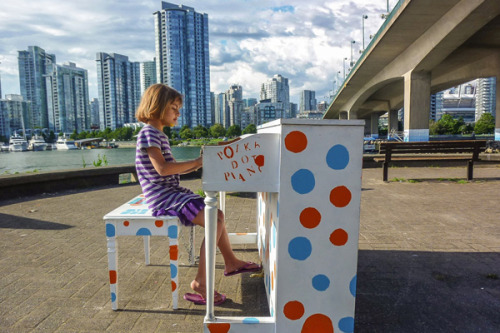
DECE1-UNIT1-IGNOU-DAY7-ORSP
Living in a Village (Rural Area): What distinguishes a village from a city is that it
has a smaller population. Most of the people may know others in a small village. There
are fewer facilities such as transport, hospitals, cinemas, schools or pucca roads. The
pace of life is slower. The boundaries between the family and the caste group are not
rigid. Consequently, the child may spend a considerable part of her day in other houses
and she grows up with many playmates.
The children, by and large, follow the occupation of the parents which may be farming
or a craft such as pottery or carpet weaving. They would spend a considerable portion
of the day assisting the parents in their work. Again the extent to which the children
assist depends on the economic situation of the family. If the family is poor, all hands
are needed to work. If the family is relatively well-off, the children have time to attend
school and may assist the parents on holidays. With changing values
education is
beginning to assume importance in the rural areas. Parents, when they can afford it.
send their children to school and hope to impart least primary education to girls.
Fewer hospitals and qualified medical persons mean more unattended illnesses. If there
is no school near the village most children would be without formal education.
Inadequate transportation implies that the child does not get to travel and know the
world outside the village, while for a child in the city the newspapers, magazines,
cinemas, television and a variety of books increase the range of information. There are
differences in the type of tasks that a child from a rural area can do as compared to a
child in an urban set up. A three year old child in the city is surprised to learn that
buffaloes give milk, because she had thought that milk comes from bottles in the milk
booth, whereas the three year old in the village sees a buffalo being milked every day.
The child
I in the city can speak confidently of aeroplanes, computers and cars. The child
in the
village may not have this information but would be able to identify a plant from
its leaves and knows how plants are grown,
Despite the similarities in rural life, the picture of the villages is a varied one. Villages
which are closer to the cities and those with industrial units such as factories or other
production units have better equipped hospitals and schools and there is some
transportation. Radios and the expanding television network has brought the outer world
villages. People give up their family occupation and commute to the cities for
better paid jobs, Education for
for girls assumes importance and in many cases children may
be attending a school in the city. On the other hand there are remote villages as the
example of Bhaiya village in Rajasthan will show. The nearest primary health centre is
60 kms away and the only hospital is 150 kms away in Jaisalmer. The nearest primary
school is 50 kms away in Deora. The nearest bus stop is 20 kms away. As you can see,
the contrasts in experience in the different ecological settings are many.
एक गाँव में रहना (ग्रामीण क्षेत्र): एक गाँव को एक शहर से अलग करना क्या है
छोटी आबादी है। एक छोटे से गाँव में अधिकतर लोग दूसरों को जानते होंगे। वहाँ
परिवहन, अस्पताल, सिनेमा, स्कूल या पक्की सड़क जैसी कम सुविधाएं हैं।
जीवन की गति धीमी है। परिवार और जाति समूह के बीच की सीमाएँ नहीं हैं
कठोर। नतीजतन, बच्चा अपने दिन का काफी हिस्सा दूसरे घरों में बिता सकता है
और वह कई प्लेमेट के साथ बड़ा हुआ।
बच्चे, बड़े और माता-पिता, जो खेती कर सकते हैं, के व्यवसाय का पालन करते हैं
या एक शिल्प जैसे मिट्टी के बर्तन या कालीन बुनाई। वे काफी हिस्सा खर्च करेंगे
दिन अपने काम में माता-पिता की सहायता करना। फिर से बच्चों को किस हद तक
सहायता परिवार की आर्थिक स्थिति पर निर्भर करती है। अगर परिवार गरीब है, तो सभी के हाथ
काम करने की जरूरत है। यदि परिवार अपेक्षाकृत अच्छी तरह से बंद है, तो बच्चों के पास उपस्थित होने का समय है
स्कूल और छुट्टियों पर माता-पिता की सहायता कर सकते हैं। बदलते मूल्यों के साथ
शिक्षा है
ग्रामीण क्षेत्रों में महत्व मानने लगा। माता-पिता, जब वे इसे बर्दाश्त कर सकते हैं।
अपने बच्चों को स्कूल भेजें और लड़कियों को कम से कम प्राथमिक शिक्षा देने की उम्मीद करें।
कम अस्पतालों और योग्य चिकित्सा व्यक्तियों का अर्थ है कि अधिक अप्राप्य बीमारी। अगर वहाँ
गाँव के पास कोई स्कूल नहीं है जहाँ अधिकांश बच्चे बिना औपचारिक शिक्षा के होंगे।
अपर्याप्त परिवहन का तात्पर्य है कि बच्चे को यात्रा करने और जानने के लिए नहीं मिलता है
गाँव के बाहर की दुनिया, जबकि शहर के एक बच्चे के लिए अखबार, पत्रिकाएँ,
सिनेमा, टेलीविज़न और विभिन्न प्रकार की पुस्तकें जानकारी की सीमा को बढ़ाती हैं। वहां
एक ग्रामीण क्षेत्र के बच्चे की तुलना में कार्यों के प्रकार में अंतर
एक शहरी सेट अप में बच्चा। शहर का एक तीन साल का बच्चा यह जानकर हैरान है
भैंस दूध देती है, क्योंकि उसने सोचा था कि दूध में बोतल से दूध आता है
बूथ, जबकि गांव में तीन साल की उम्र के एक भैंस को हर दिन दूध दिया जाता है।
बच्चा
मैं शहर में हवाई जहाज, कंप्यूटर और कारों के आत्मविश्वास से बात कर सकता हूं। बच्चा
में
गाँव को इसकी जानकारी नहीं है, लेकिन वह एक पौधे की पहचान करने में सक्षम होगा
इसकी पत्तियां और जानती हैं कि पौधे कैसे उगाए जाते हैं,
ग्रामीण जीवन में समानता के बावजूद, गांवों की तस्वीर एक विविध है। गांवों
जो शहरों या औद्योगिक इकाइयों जैसे कारखानों या अन्य के करीब हैं
उत्पादन इकाइयों में बेहतर सुसज्जित अस्पताल और स्कूल हैं और कुछ है
परिवहन। रेडियो और विस्तारित टेलीविजन नेटवर्क ने बाहरी दुनिया को लाया है
गांवों। लोग अपने पारिवारिक व्यवसाय को छोड़ देते हैं और शहरों के लिए आवागमन करते हैं
बेहतर वेतन वाली नौकरियां, शिक्षा के लिए
लड़कियों के लिए महत्व और कई मामलों में बच्चे हो सकते हैं
शहर के एक स्कूल में जाना। दूसरी ओर सुदूर गाँव हैं
राजस्थान के भैया गांव का उदाहरण दिखाएगा। निकटतम प्राथमिक स्वास्थ्य केंद्र है
60 किलोमीटर दूर और एकमात्र अस्पताल जैसलमेर में 150 किलोमीटर दूर है। निकटतम प्राथमिक
देवरा में स्कूल 50 किलोमीटर दूर है। निकटतम बस स्टॉप 20 किलोमीटर दूर है। जैसा कि आप देख सकते हैं,
विभिन्न पारिस्थितिक सेटिंग्स में अनुभव के विपरीत कई हैं।
DECE1-UNIT1-IGNOU-DAY7-ORSP
Living in a Tribal Settlement: There are many tribes in India, each with its distinct
customs, laws, kinds of occupation and the roles and responsibilities of men and women.
There is a great variety of tribal experience. Some tribes in the vicinity of cities and
towns have contact with them and have been integrated into the mainstream of life.
Some tribes live in near isolation from the rest of the world with minimal or no contact
with people outside the tribe. These tribes are almost totally self sufficient, depending on
the outside world for only a few things. In such a setting the child grows up believing
that the way of life of the tribe is the only way. Let us briefly read about one such
tribe. into the Among the Hill Marias, one of the most isolated tribes living in the Bastar district of
Madhya Pradesh, shifting agriculture is the means of subsistence. The entire village
shifts from a site once every two or three years. The land is generally collectively
owned and consequently not much importance is attached to private property. The
people depend on the outside world only for salt, chillies and tobacco.
For a tribe, solidarity is of paramount importance and consequently laws, customs and
norms are strictly observed. Among Hill Marias premarital sex is permitted while incest
is taboo. Child marriages are totally absent. Divorce for both men and women is easy
but extra marital sex gets a death penalty. Literacy levels are low and ill health is
rampant due to the lack of health facilities,
However, the intervention of the state government and the voluntary agencies has
exposed the Hill Marias to the outside world. This has brought about changes in their
lifestyle. There is now a hospital, a school, vocational training centre and a fair price
shop. Though the tribals still visit their traditional healer, they also go to the hospital.
The school, 30-40 kms away, has attracted many boys and girls and they are doing well.
The villages of the tribals, which were inaccessible earlier, have been connected to the
district by roads. About hundred tubewells have been sunk and solar energy is being
used in some villages. There has been an attempt to change the practice of shifting
agriculture to settled agriculture. Food habits have changed too.
एक जनजातीय निपटान में रहना: भारत में कई जनजातियाँ हैं, जिनमें से प्रत्येक अपने अलग हैं
रीति-रिवाज, कानून, पेशा के प्रकार और पुरुषों और महिलाओं की भूमिकाएं और जिम्मेदारियां।
आदिवासी अनुभव की एक महान विविधता है। शहरों के आसपास के क्षेत्रों में कुछ जनजातियाँ और
शहरों का उनके साथ संपर्क है और उन्हें जीवन की मुख्यधारा में एकीकृत किया गया है।
कुछ जनजातियाँ न्यूनतम या बिना किसी संपर्क के शेष दुनिया से अलग-थलग रहती हैं
जनजाति के बाहर के लोगों के साथ। ये जनजातियाँ लगभग पूरी तरह से आत्मनिर्भर हैं, जो निर्भर करती है
केवल कुछ चीजों के लिए बाहरी दुनिया। ऐसी सेटिंग में बच्चा विश्वास करने लगता है
कि जनजाति के जीवन का तरीका एकमात्र तरीका है। आइए हम संक्षेप में एक ऐसे के बारे में पढ़ते हैं
जनजाति। बस्तर जिले में रहने वाली सबसे अलग जनजातियों में से एक, हिल मारियास में
मध्य प्रदेश, कृषि को स्थानांतरित करना निर्वाह का साधन है। पूरा गाँव
हर दो या तीन साल में एक बार साइट से शिफ्ट होता है। जमीन आम तौर पर सामूहिक रूप से होती है
स्वामित्व और फलस्वरूप निजी संपत्ति से बहुत अधिक महत्व नहीं जुड़ा है।
लोग केवल नमक, मिर्च और तंबाकू के लिए बाहरी दुनिया पर निर्भर हैं।
एक जनजाति के लिए, एकजुटता सर्वोपरि महत्व की है और इसके परिणामस्वरूप कानून, रीति-रिवाज और
मानदंडों का कड़ाई से पालन किया जाता है। पहाड़ी मैरिएस में विवाह से पहले सेक्स की अनुमति है
वर्जित है। बाल विवाह पूरी तरह से अनुपस्थित हैं। पुरुषों और महिलाओं दोनों के लिए तलाक आसान है
लेकिन अतिरिक्त वैवाहिक सेक्स से मृत्यु दंड मिलता है। साक्षरता का स्तर कम है और बीमार स्वास्थ्य है
स्वास्थ्य सुविधाओं की कमी के कारण बड़े पैमाने पर,
हालांकि, राज्य सरकार और स्वैच्छिक एजेंसियों का हस्तक्षेप है
हिल Marias बाहर की दुनिया को उजागर किया। इससे उनमें बदलाव आया है
जीवन शैली। अब एक अस्पताल, एक स्कूल, व्यावसायिक प्रशिक्षण केंद्र और एक उचित मूल्य है
दुकान। हालाँकि आदिवासी अभी भी अपने पारंपरिक उपचारक के पास जाते हैं, फिर भी वे अस्पताल जाते हैं।
30-40 किलोमीटर दूर स्कूल ने कई लड़कों और लड़कियों को आकर्षित किया है और वे अच्छा कर रहे हैं।
आदिवासियों के गाँव, जो पहले दुर्गम थे, से जुड़े हुए हैं
सड़कों द्वारा जिला। लगभग सौ ट्यूबवेल डूब गए हैं और सौर ऊर्जा हो रही है
कुछ गांवों में उपयोग किया जाता है। शिफ्टिंग की प्रथा को बदलने की कोशिश की गई है
कृषि से सुलझी कृषि। भोजन की आदतें भी बदल गई हैं।
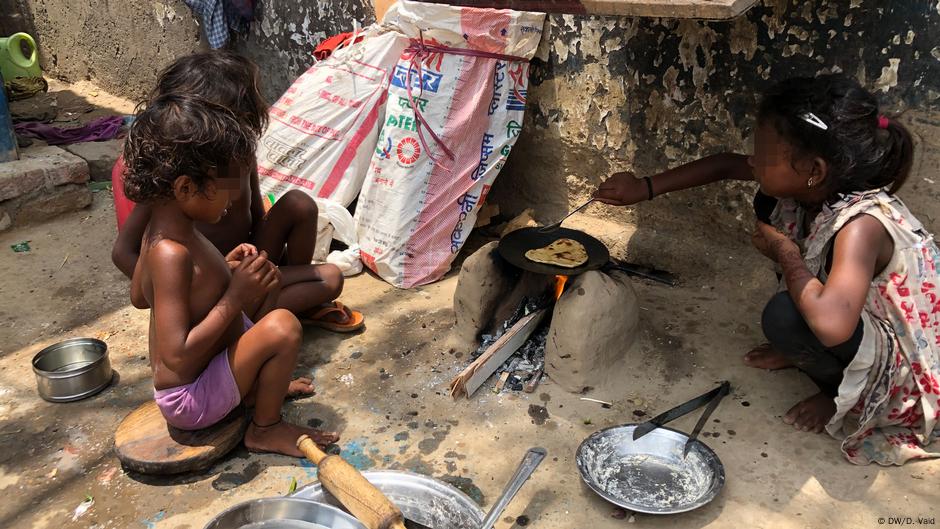
Check Your Progress Exercise 3
Answer the following questions briefly in the space provided.
1) Following are some statements. Read them carefully and write in the brackets
whether they are true or false.
a) In all religions children are regarded as tender, precious and valuable and
childhood as a time for learning.
b) A child who lives in a family where there are a number of caregivers forms
emotional bonds with many.
c) The quality of time spent by the caregiver with the child is more important
than the quantity of time.
2) List three ways in which the experiences of a child living in a city are different
from one who lives in a village.
3) List three changes that have come about in the lifestyle of the Hill Marias as a
result of contact with the outside world.
Welcome To
Odisha Regional Study Point
We Allows the best competitive exam preparation for SSC,BANKING, RAILWAY &Other State Exam(CT, BE.d) DECE(IGNOU) In ଓଡ଼ିଆ Language…
Why opt ORSP?
✅Daily Free Live class
✅Daily Free practice Quiz
✅FREE Live Tests Quiz
✅Performance Analysis
✅All Govt Exams are Covered
Join With us As per Schedule
And
Happy Learning…
Thank You
ORSP
(9502052059)
Subcribe Youtube Channel Link-
Join Our Telegram Channel(ORSP)
Join Our Telegram Channel(DECE)(IGNOU)

